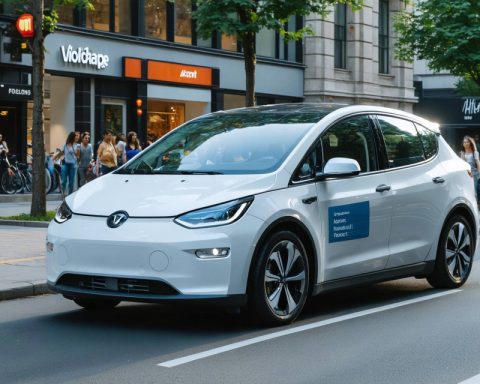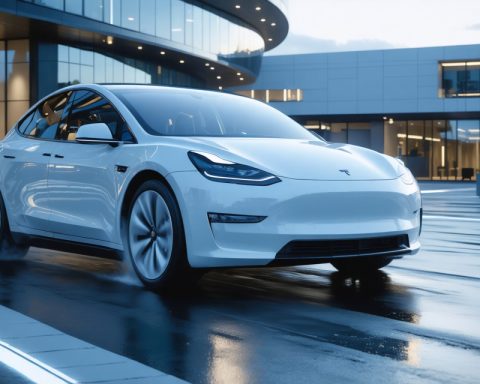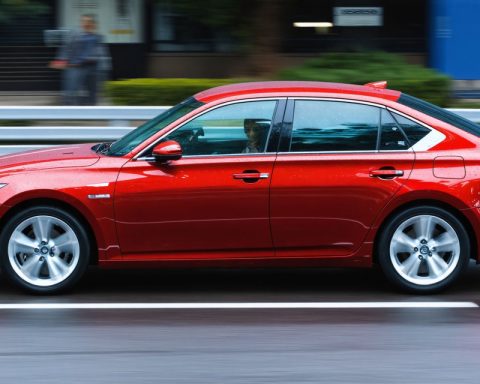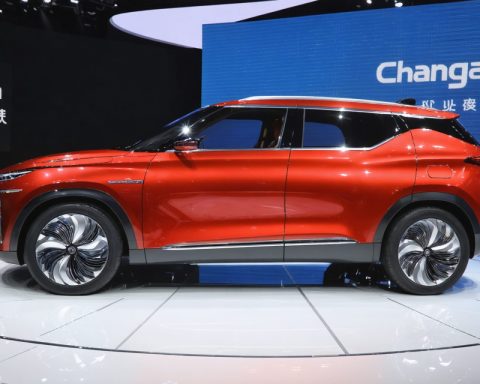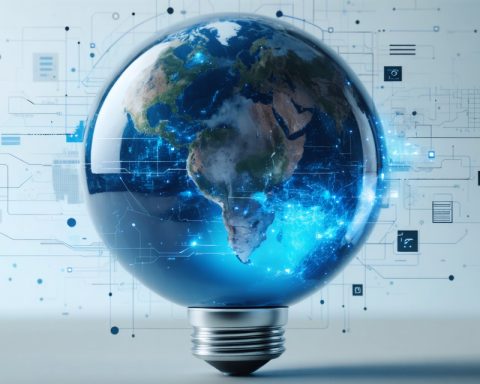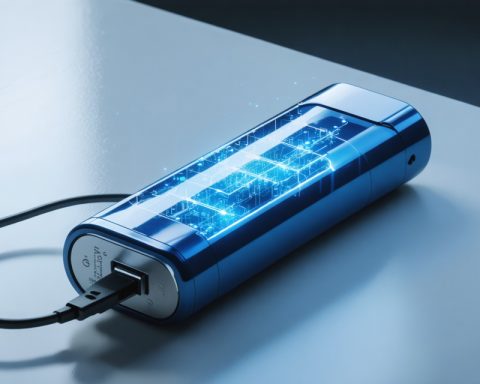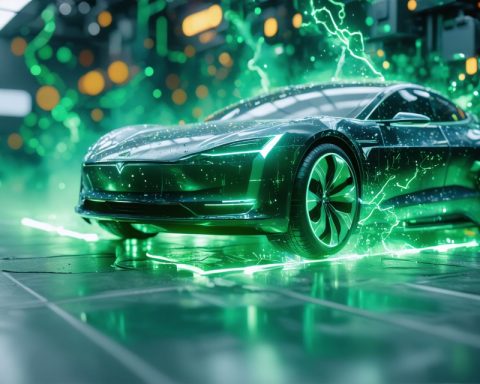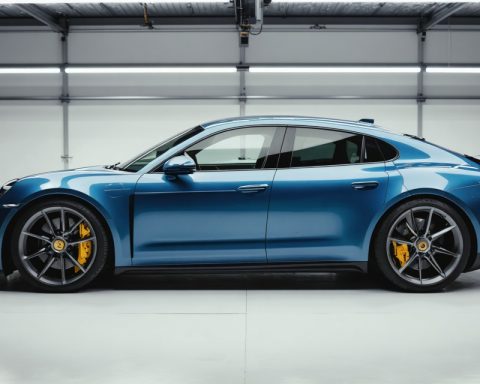- Hyundai’s $7.6 billion Metaplant in Georgia boosts EV and hybrid production in the U.S.
- Record-breaking sales for Hyundai and Kia in Q1, with Hyundai achieving a 10% increase year-over-year.
- March sales for Hyundai increased by 13% from the previous year, totaling 87,019 vehicles.
- Strong sales performance, particularly from the Ioniq 5 (26% growth) and a 68% rise in hybrid sales.
- Kia also marked a record Q1 with a 10.7% rise, despite challenges from new battery sourcing regulations.
- The 2025 Ioniq 5 introduces a Tesla-style NACS charging port, expanding charging options for users.
- Hyundai and Kia face challenges from potential 25% tariffs on vehicle components, possibly increasing costs.
The verdant hills of Georgia frame Hyundai’s latest triumph—a $7.6 billion Metaplant designed to turbocharge the production of electric vehicles (EVs) and hybrids in the United States. This bold strategy is bearing fruit, as Hyundai celebrated its best-ever first-quarter sales, while March marked its second-highest sales month on record.
Hyundai’s recent victories are not isolated triumphs but a chorus of success harmonized by sister brand Kia, which also enjoyed a record-breaking Q1. While numbers soared overall, a whisper of caution accompanies the celebration with a slight dip in EV6 and EV9 sales.
March saw Hyundai sell an impressive 87,019 vehicles, reflecting a 13% year-over-year growth, leading to a record-setting first quarter with 203,554 units sold in the U.S., marking a 10% increase from last year. Hyundai’s robust performance was largely buoyed by traditional gas-powered stalwarts, yet its EV and hybrid models played a crucial supporting role in the brand’s ascension. A standout performer, the Ioniq 5, saw a vibrant 26% growth. Meanwhile, hybrid sales surged an extraordinary 68%, showcasing Hyundai’s nimble adaptation to evolving consumer demands.
Complementing this electrifying momentum, Kia achieved its highest-ever first-quarter sales with 198,850 units—a clear 10.7% rise. While flagship models like the Carnival and Telluride reveled in a sales boon, the EV6 and EV9 experienced temporary roadblocks. These are attributed partly to regulatory shifts in battery sourcing requirements under the Inflation Reduction Act, which caused production throttling as Kia adapted to meet new standards.
Hyundai’s innovation continues unabated with the launch of the U.S.-built 2025 Ioniq 5—the first non-Tesla EV to boast a Tesla-style NACS charging port from the factory. This strategic enhancement opens a vast network of Superchargers, empowering seamless cross-country journeys. This advancement will be shared by the eagerly anticipated Ioniq 9, slated for spring delivery.
Amid this whirlwind of success, the future holds uncertainty. The Trump administration’s impending 25% tariffs on vehicle components and imports loom like a storm cloud on the horizon. Approximately 30% of components in the U.S.-made Ioniq 5 are sourced from Korea, posing a sharp challenge. If enacted, these tariffs promise to escalate prices and dampen sales—testing the mettle of both Hyundai and Kia.
As Hyundai and Kia continue their dance through a landscape peppered with both challenges and opportunities, their pursuit of innovation offers a vivid reminder: in the face of daunting odds, the heart of the automotive industry beats strongest with resilience and ingenuity.
Hyundai and Kia’s Rise: A Deep Dive into Record-Breaking Sales and Future Challenges
Hyundai’s Strategic Position in the U.S. EV Market
As Hyundai embarks on an era-defining expansion in the United States, their $7.6 billion investment in a state-of-the-art Metaplant in Georgia marks a significant leap forward in the production of electric vehicles (EVs) and hybrids. This effort aligns with a broader strategy to capture and expand market share in the rapidly growing EV sector.
How Hyundai Crafted an Electrifying Momentum
To provide a more detailed picture:
– Innovative Manufacturing: The Metaplant is designed with advanced manufacturing technologies to ensure scalability and efficiency in EV production. This is accompanied by a commitment to sustainability, using eco-friendly processes and sustainable materials whenever possible.
– Product Diversification: Hyundai’s focus on both EVs and hybrids indicates an understanding of market diversity. Models like the Ioniq 5 have been pivotal, previously benefiting from robust demand linked to their design, range, and efficiency.
– Technological Synergy with NACS: The upcoming 2025 Ioniq 5’s integration of a Tesla-style NACS charging port is a strategic move, making it easier for consumers to access a large network of charging stations, thereby reducing range anxiety—a major barrier for potential EV buyers.
Evaluating Challenges and Market Trends
Despite these advancements, the automotive landscape in the U.S. poses several hurdles:
– Regulatory Challenges: The Inflation Reduction Act has altered battery sourcing requirements, affecting production timelines and costs. Kia’s temporary dip in EV6 and EV9 sales highlights the impact of these regulations.
– Possible Tariffs: The looming threat of 25% tariffs on imported vehicle components, especially affecting cars with components sourced from Korea, could increase costs, impacting pricing and market competitiveness.
– EV Market Growth: According to the International Energy Agency, global EV sales surpassed 10 million in 2022, and growth is expected to continue. Hyundai and Kia’s ability to adapt swiftly could determine their future market position (IEA).
Real-World Use Cases and Consumer Insights
– Use Cases: Offering both EVs and hybrids allows Hyundai to appeal to consumers across the spectrum—those ready to embrace full electric and those balancing environmental concerns with range or infrastructure availability.
– Consumer Behavior: The significant 68% rise in hybrid sales suggests growing consumer confidence in Hyundai’s alternative-fuel models, a trend that could escalate as infrastructure and incentives improve.
Suggested Actionable Recommendations
– Stay Informed: Consumers should keep an eye on policy changes that could affect EV incentives, such as tax credits, enhancing purchasing decisions.
– Explore Financing Options: As vehicle prices might fluctuate due to tariffs, exploring diverse financing options early could mitigate potential cost increases.
– Utilize Charging Infrastructure: Owners of the new Ioniq models should maximize their usage of the Tesla Supercharger network, enhancing their EV ownership experience.
For more on Hyundai and Kia’s cutting-edge innovations, check out Hyundai and Kia.
Ultimately, Hyundai and Kia’s evolution is illustrative of a broader shift in the automotive industry, underscoring the need for agility, innovation, and strategic foresight in navigating an ever-changing marketplace.

